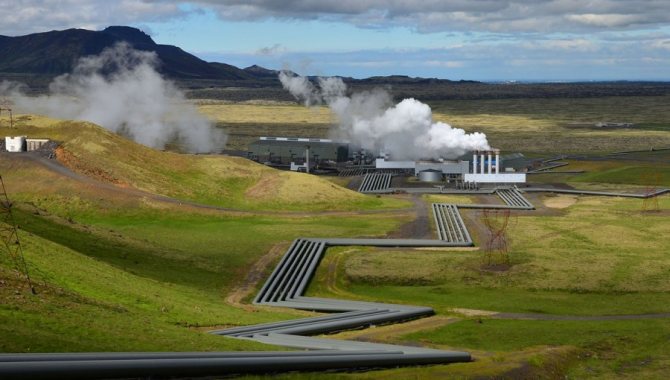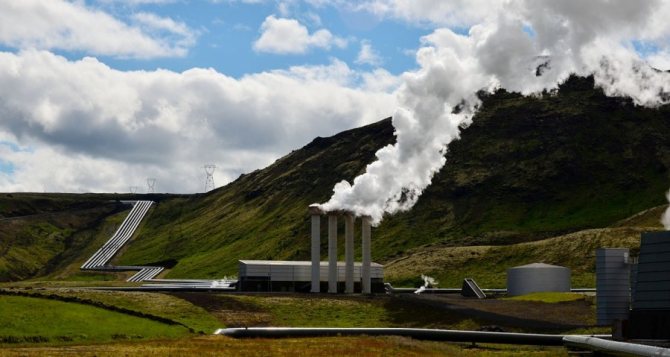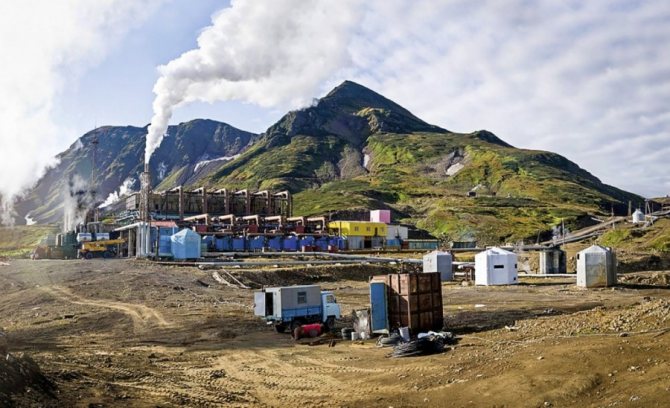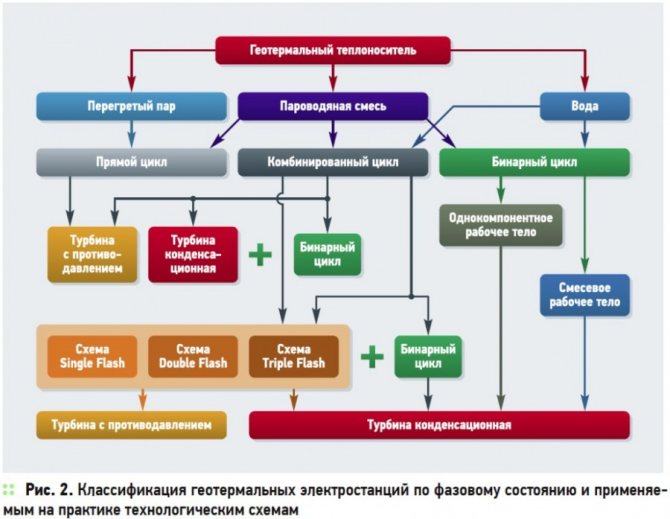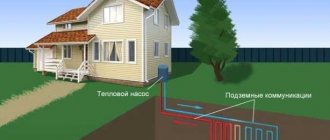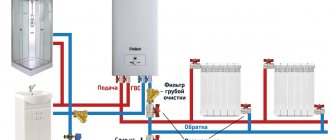Geothermal energy

Already from the name it is clear that it represents the warmth of the earth's interior. Under the earth's crust is a layer of magma, which is a fiery liquid silicate melt. According to research data, the energy potential of this heat is much higher than the energy of the world's reserves of natural gas, as well as oil. Magma - lava comes to the surface. Moreover, the greatest activity is observed in those layers of the earth on which the boundaries of tectonic plates are located, as well as where the earth's crust is characterized by thinness. The geothermal energy of the earth is obtained in the following way: the lava and the water resources of the planet come into contact, as a result of which the water begins to heat up sharply. This leads to the eruption of a geyser, the formation of the so-called hot lakes and underwater currents. That is, precisely to those natural phenomena, the properties of which are actively used as an inexhaustible source of energy.
Petrothermal energy
At the moment, the heat of the earth's interior is widely used in the world, and this is mainly the energy of shallow wells - up to 1 km. In order to provide electricity, heat or hot water supply, downhole heat exchangers operating on liquids with a low boiling point (for example, freon) are installed.
Now the use of a borehole heat exchanger is the most rational way of producing heat. It looks like this: the coolant circulates in a closed loop. The heated one rises along a concentrically lowered pipe, giving off its heat, after which, cooled, is pumped into the casing with the help of a pump.
The use of the energy of the earth's interior is based on a natural phenomenon - as it approaches the core of the Earth, the temperature of the earth's crust and mantle rises. At a level of 2-3 km from the surface of the planet, it reaches more than 100 ° С, on average increasing by 20 ° С with each subsequent kilometer. At a depth of 100 km, the temperature reaches 1300-1500 ºС.
Artificial geothermal springs
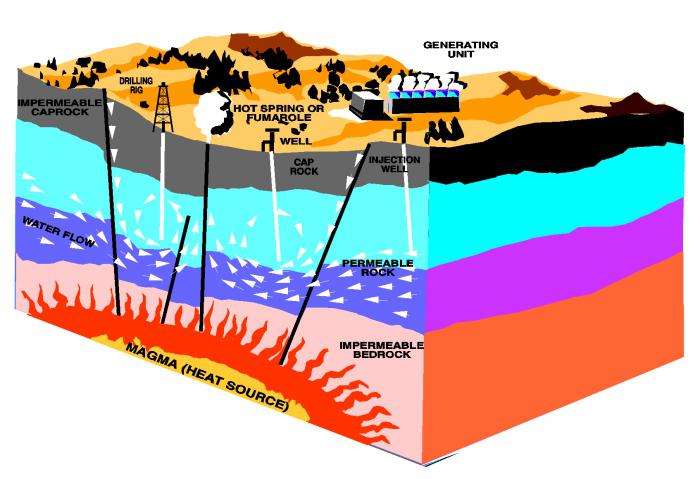

The energy contained in the bowels of the earth must be used wisely. For example, there is an idea to create underground boilers. To do this, you need to drill two wells of sufficient depth, which will be connected at the bottom. That is, it turns out that in almost any corner of the land it is possible to obtain geothermal energy industrially: cold water will be pumped into the reservoir through one well, and hot water or steam will be extracted through the second. Artificial heat sources will be beneficial and rational if the resulting heat provides more energy. The steam can be directed to turbine generators, which will generate electricity.
Of course, the selected heat is only a fraction of what is available in the total reserves. But it should be remembered that the deep heat will be constantly replenished due to the processes of radioactive decay, compression of rocks, stratification of the bowels. According to experts, the earth's crust accumulates heat, the total amount of which is 5,000 times greater than the calorific value of all the fossil resources of the earth as a whole. It turns out that the operating time of such artificially created geothermal stations can be unlimited.
Methods of collecting energy resources of the Earth
Today there are three main methods of harvesting geothermal energy: dry steam, hot water, and binary cycle. The dry steam process directly rotates the turbine drives of the power generators. Hot water enters from the bottom up, then sprayed into the tank to create steam to drive the turbines.These two methods are the most common, generating hundreds of megawatts of electricity in the United States, Iceland, Europe, Russia, and other countries. But the location is limited, as these factories only operate in tectonic regions where it is easier to access heated water.
With the binary cycle technology, warm (not necessarily hot) water is extracted to the surface and combined with butane or pentane, which has a low boiling point. This liquid is pumped through a heat exchanger where it is vaporized and sent through a turbine before being recirculated back to the system. Binary cycle technology provides tens of megawatts of electricity in the United States: California, Nevada and the Hawaiian Islands.


The principle of obtaining energy
Disadvantages of getting geothermal energy
On a utility level, geothermal power plants are expensive to build and operate. Finding a suitable location requires costly well surveys with no guarantee of hitting a productive underground hot spot. However, analysts expect this capacity to nearly double over the next six years.
In addition, areas with a high temperature underground source are located in areas with active geological volcanoes. These "hot spots" have formed at the boundaries of tectonic plates in places where the crust is quite thin. The Pacific region is often referred to as the ring of fire for many volcanoes with many hotspots, including Alaska, California, and Oregon. Nevada has hundreds of hotspots covering most of the northern United States.
There are also other seismically active regions. Earthquakes and magma movement allow water to circulate. In some places, water rises to the surface and natural hot springs and geysers occur, such as in Kamchatka. The water in the geysers of Kamchatka reaches 95 ° C.
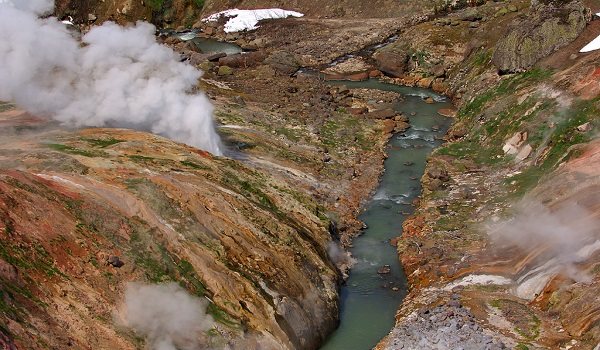

One of the problems with open geyser systems is the release of some air pollutants. Hydrogen sulfide is a toxic gas with a very recognizable "rotten egg" smell - a small amount of arsenic and minerals released with steam. Salt can also pose an environmental problem.
In offshore geothermal power plants, a significant amount of interfering salt accumulates in pipes. In closed systems, there are no emissions and all the liquid brought to the surface is returned.
The economic potential of the energy resource
Hot spots are not the only places where geothermal energy can be found. There is a constant supply of usable heat for direct heating purposes anywhere from 4 meters to several kilometers below the surface of virtually anywhere on earth. Even land in your own backyard or local school has the economic potential in the form of heat to be pumped out into your home or other buildings.
In addition, there is a huge amount of thermal energy in dry rock formations very deep below the surface (4-10 km).
The use of new technology could expand geothermal systems, where humans can use this heat to generate electricity on a much larger scale than conventional technologies. The first demonstration projects of this principle of generating electricity were shown in the United States and Australia back in 2013.
If the full economic potential of geothermal resources can be realized, then this will represent a huge source of electricity for production facilities. Scientists estimate that conventional geothermal sources have a potential of 38,000 MW, which can generate 380 million MW of electricity per year.
Hot dry rocks occur at depths of 5 to 8 km everywhere underground and at shallower depths in certain places.Access to these resources involves the introduction of cold water circulating through the hot rocks and the removal of heated water. There is currently no commercial application for this technology. Existing technologies do not yet allow recovering thermal energy directly from magma, very deeply, but this is the most powerful resource of geothermal energy.
With the combination of energy resources and its consistency, geothermal energy can play an irreplaceable role as a cleaner, more sustainable energy system.
Features of sources
Sources that provide geothermal energy are almost impossible to use in full. They exist in more than 60 countries of the world, with the majority of land volcanoes in the Pacific Volcanic Ring of Fire. But in practice, it turns out that geothermal sources in different regions of the world are completely different in their properties, namely, average temperature, mineralization, gas composition, acidity, and so on.
Geysers are sources of energy on Earth, the peculiarity of which is that they spew boiling water at regular intervals. After the eruption has occurred, the pool becomes free of water, at its bottom you can see a channel that goes deep into the ground. Geysers are used as energy sources in regions such as Kamchatka, Iceland, New Zealand and North America, and solitary geysers are found in several other areas.
Industry and housing and communal services
In November 2014, the largest geothermal power plant in the world at the time began operating in Kenya. The second largest is located in Iceland - this is Hellisheid, which takes heat from sources near the Hengiedl volcano.


Other countries that use geothermal energy on an industrial scale: USA, Philippines, Russia, Japan, Costa Rica, Turkey, New Zealand, etc.
There are four main schemes for energy production at GeoTPP:
- straight, when steam is directed through pipes to turbines connected to power generators;
- indirect, similar to the previous one in everything, except that before entering the pipes, steam is cleaned of gases;
- binary - not water or steam is used as the working heat, but another liquid with a low boiling point;
- mixed - similar to straight line, but after condensation, undissolved gases are removed from the water.
In 2009, a team of researchers looking for usable geothermal resources reached molten magma just 2.1 km deep. Such falling into magma is very rare, this is only the second known case (the previous one occurred in Hawaii in 2007).
Although the pipe connected to magma has never been connected to the nearby Krafla Geothermal Power Plant, scientists have received very promising results. Until now, all operating stations took heat indirectly, from earth rocks or from underground waters.
Where does the energy come from?
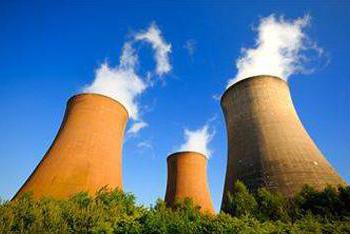

Uncooled magma is located very close to the earth's surface. Gases and vapors are released from it, which rise and pass along the cracks. Mixing with groundwater, they cause their heating, they themselves turn into hot water, in which many substances are dissolved. Such water is released to the surface of the earth in the form of various geothermal springs: hot springs, mineral springs, geysers, and so on. According to scientists, the hot bowels of the earth are caves or chambers connected by passages, cracks and channels. They are just filled with groundwater, and magma centers are located very close to them. In this way, the thermal energy of the earth is formed in a natural way.
Hydrothermal energy
Water circulating at great depths is heated to significant values. In seismically active regions, it rises to the surface along cracks in the earth's crust; in calm regions, it can be removed using wells.
The principle of operation is the same: heated water rises up the well, gives off heat, and returns down the second pipe. The cycle is practically endless and is renewed as long as warmth remains in the earth's interior.
In some seismically active regions, hot waters lie so close to the surface that one can observe firsthand how geothermal energy works. A photo of the vicinity of the Krafla volcano (Iceland) shows geysers that transmit steam for the Geothermal power plant operating there.


Electric field of the Earth
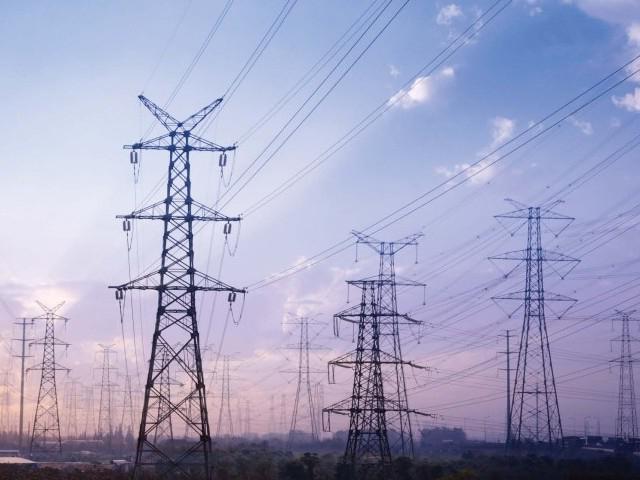

There is another alternative energy source in nature, which is distinguished by renewability, environmental friendliness, and ease of use. True, until now this source is only being studied and not applied in practice. So, the potential energy of the Earth is hidden in its electric field. Energy can be obtained in this way by studying the basic laws of electrostatics and the characteristics of the Earth's electric field. In fact, our planet from an electrical point of view is a spherical capacitor charged up to 300,000 volts. Its inner sphere has a negative charge, and the outer one, the ionosphere, is positive. The Earth's atmosphere is an insulator. Through it there is a constant flow of ionic and convective currents, which reach a force of many thousands of amperes. However, the potential difference between the plates does not decrease in this case.
This suggests that there is a generator in nature, the role of which is to constantly replenish the leakage of charges from the capacitor plates. The role of such a generator is played by the Earth's magnetic field, which rotates with our planet in the flow of the solar wind. The energy of the Earth's magnetic field can be obtained just by connecting an energy consumer to this generator. To do this, you need to perform a reliable grounding installation.
Heat of the Earth
(For the end. For the beginning, see Science and Life, No. 9, 2013)
Collector for collecting thermal boron water in Larderello (Italy), first half of the 19th century.
The motor and inverter used at Larderello in 1904 in the first experiment to produce geothermal electricity.
Schematic diagram of the operation of a thermal power plant.
The principle of operation of GeoPP on dry steam. Geothermal steam from a production well is passed directly through a steam turbine. The simplest of the existing schemes of GeoPP operation.
The principle of operation of a GeoPP with an indirect circuit. Hot underground water from a production well is pumped into an evaporator, and the resulting steam is supplied to a turbine.
The principle of operation of a binary GeoPP. Hot thermal water interacts with another liquid that acts as a working fluid and has a lower boiling point.
Scheme of the petrothermal system. The system is based on the use of a temperature gradient between the surface of the earth and its subsoil, where the temperature is higher.
Schematic diagram of a refrigerator and a heat pump: 1 - condenser; 2 - throttle (pressure regulator); 3 - evaporator; 4 - compressor.
Mutnovskaya GeoPP in Kamchatka. At the end of 2011, the installed capacity of the station was 50 MW, but it is planned to increase it to 80 MW. Photo by Tatiana Korobkova (Research Laboratory of RES of the Geographical Faculty of Lomonosov Moscow State University.)
‹
›
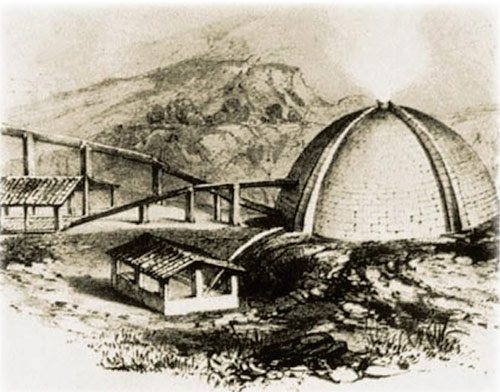

The use of geothermal energy has a very long history. One of the first known examples is Italy, a place in the province of Tuscany, now called Larderello, where as early as the beginning of the 19th century, the local hot thermal waters, poured out naturally or extracted from shallow wells, were used for energy purposes.
Boron-rich underground water was used here to obtain boric acid. Initially, this acid was obtained by evaporation in iron boilers, and ordinary firewood from the nearby forests was taken as fuel, but in 1827 Francesco Larderel created a system that worked on the heat of the waters themselves. At the same time, the energy of natural water vapor began to be used for the operation of drilling rigs, and at the beginning of the 20th century - for heating local houses and greenhouses. In the same place, in Larderello, in 1904, thermal water vapor became an energy source for generating electricity.
Some other countries followed the example of Italy in the late 19th and early 20th centuries. For example, in 1892, thermal waters were first used for local heating in the United States (Boise, Idaho), in 1919 in Japan, and in 1928 in Iceland.
In the United States, the first hydrothermal power plant appeared in California in the early 1930s, in New Zealand in 1958, in Mexico in 1959, in Russia (the world's first binary geothermal power plant) in 1965 ...
Old principle on a new source
Electricity generation requires a higher temperature of the hydro source than for heating - more than 150 ° C. The principle of operation of a geothermal power plant (GeoPP) is similar to the principle of operation of a conventional thermal power plant (TPP). In fact, a geothermal power plant is a kind of thermal power plant.
At TPPs, as a rule, coal, gas or fuel oil act as the primary source of energy, and water vapor serves as the working fluid. Fuel, burning, heats water to the state of steam, which rotates the steam turbine, and it generates electricity.
The difference between GeoPPs is that the primary source of energy here is the heat of the earth's interior and the working fluid in the form of steam is supplied to the turbine blades of an electric generator in a "ready-made" form directly from the production well.
There are three main schemes of GeoPP operation: direct, using dry (geothermal) steam; indirect, based on hydrothermal water, and mixed, or binary.
The use of a particular scheme depends on the state of aggregation and the temperature of the energy carrier.
The simplest and therefore the first of the mastered schemes is the straight line, in which the steam coming from the well is passed directly through the turbine. The world's first GeoPP in Larderello also operated on dry steam in 1904.
GeoPPs with an indirect scheme of work are the most common in our time. They use hot underground water, which is pumped into an evaporator under high pressure, where part of it is evaporated, and the resulting steam rotates a turbine. In some cases, additional devices and circuits are required to purify geothermal water and steam from aggressive compounds.
The spent steam enters the injection well or is used for space heating - in this case, the principle is the same as in the operation of a CHP.
At binary GeoPPs, hot thermal water interacts with another liquid that acts as a working fluid with a lower boiling point. Both liquids are passed through a heat exchanger, where thermal water evaporates the working fluid, the vapor of which rotates the turbine.
This system is closed, which solves the problem of emissions into the atmosphere. In addition, working fluids with a relatively low boiling point make it possible to use not very hot thermal waters as a primary source of energy.
In all three schemes, a hydrothermal source is exploited, but petrothermal energy can also be used to generate electricity (for the differences between hydrothermal and petrothermal energy, see Science and Life, No. 9, 2013).
The schematic diagram in this case is also quite simple. It is necessary to drill two interconnected wells - injection and production. Water is pumped into the injection well. At depth, it heats up, then heated water or steam formed as a result of strong heating is fed through the production well to the surface. Further, it all depends on how petrothermal energy is used - for heating or for generating electricity. A closed cycle is possible with the injection of waste steam and water back into the injection well or another way of disposal.
The disadvantage of such a system is obvious: to obtain a sufficiently high temperature of the working fluid, it is necessary to drill wells to a great depth.And these are serious costs and the risk of significant heat loss when the fluid moves upward. Therefore, petrothermal systems are still less widespread than hydrothermal ones, although the potential of petrothermal energy is orders of magnitude higher.
Currently, the leader in the creation of the so-called petrothermal circulation systems (PCS) is Australia. In addition, this direction of geothermal energy is actively developing in the USA, Switzerland, Great Britain, and Japan.
Lord Kelvin's gift
The invention in 1852 of a heat pump by physicist William Thompson (aka Lord Kelvin) provided mankind with a real opportunity to use the low-potential heat of the upper soil layers. The heat pump system, or, as Thompson called it, the heat multiplier, is based on the physical process of transferring heat from the environment to the refrigerant. In fact, it uses the same principle as in petrothermal systems. The difference is in the heat source, in connection with which a terminological question may arise: to what extent can a heat pump be considered a geothermal system? The fact is that in the upper layers, to depths of tens - hundreds of meters, the rocks and the fluids contained in them are heated not by the deep heat of the earth, but by the sun. Thus, it is the sun in this case that is the primary source of heat, although it is taken, as in geothermal systems, from the earth.
The work of a heat pump is based on a delay in the heating and cooling of the soil compared to the atmosphere, as a result of which a temperature gradient is formed between the surface and deeper layers, which retain heat even in winter, similar to what happens in water bodies. The main purpose of heat pumps is space heating. In fact, it is a “reverse refrigerator”. Both the heat pump and the refrigerator interact with three components: the internal environment (in the first case - the heated room, in the second - the refrigerated chamber of the refrigerator), the external environment - the energy source and the refrigerant (coolant), it is also the heat carrier that provides heat transfer or cold.
A substance with a low boiling point acts as a refrigerant, which allows it to take heat from a source that has even a relatively low temperature.
In the refrigerator, the liquid refrigerant enters the evaporator through a throttle (pressure regulator), where, due to a sharp decrease in pressure, the liquid evaporates. Evaporation is an endothermic process that requires external heat absorption. As a result, heat is taken from the inner walls of the evaporator, which provides a cooling effect in the refrigerator chamber. Further, from the evaporator, the refrigerant is sucked into the compressor, where it returns to the liquid state of aggregation. This is a reverse process leading to the release of the removed heat into the external environment. As a rule, it is thrown into the room and the back of the refrigerator is relatively warm.
A heat pump works in much the same way, with the difference that heat is taken from the external environment and through the evaporator enters the internal environment - the room heating system.
In a real heat pump, water is heated, passing along an external circuit, laid in the ground or in a reservoir, and then enters the evaporator.
In the evaporator, heat is transferred to an internal circuit filled with a refrigerant with a low boiling point, which, passing through the evaporator, changes from a liquid to a gaseous state, taking heat away.
Further, the gaseous refrigerant enters the compressor, where it is compressed to high pressure and temperature, and enters the condenser, where heat exchange takes place between the hot gas and the coolant from the heating system.
The compressor requires electricity to operate, however, the transformation ratio (the ratio of consumed and generated energy) in modern systems is high enough to ensure their efficiency.
Currently, heat pumps are widely used for space heating, mainly in economically developed countries.
Eco-correct energy
Geothermal energy is considered environmentally friendly, which is generally true. First of all, it uses a renewable and practically inexhaustible resource. Geothermal energy does not require large areas, unlike large hydroelectric power plants or wind farms, and does not pollute the atmosphere, unlike hydrocarbon energy. On average, a GeoPP occupies 400 m2 in terms of 1 GW of generated electricity. The same figure for a coal-fired power plant, for example, is 3600 m2. The ecological advantages of GeoPPs also include low water consumption - 20 liters of fresh water per 1 kW, while TPPs and NPPs require about 1000 liters. Note that these are environmental indicators of the "average" GeoPP.
But there are still negative side effects. Among them, noise, thermal pollution of the atmosphere and chemical pollution - water and soil, as well as the formation of solid waste are most often distinguished.
The main source of chemical pollution of the environment is the actual thermal water (with high temperature and mineralization), which often contains large amounts of toxic compounds, in connection with which there is a problem of disposal of waste water and hazardous substances.
The negative effects of geothermal energy can be traced at several stages, starting with the drilling of wells. Here, the same dangers arise as when drilling any well: destruction of the soil and vegetation cover, contamination of soil and groundwater.
At the stage of operation of the GeoPP, the problems of environmental pollution persist. Thermal fluids - water and steam - usually contain carbon dioxide (CO2), sulfur sulfide (H2S), ammonia (NH3), methane (CH4), table salt (NaCl), boron (B), arsenic (As), mercury (Hg ). When released into the environment, they become sources of its pollution. In addition, an aggressive chemical environment can cause corrosive damage to the structures of the Geothermal Power Plant.
At the same time, emissions of pollutants at GeoPPs are on average lower than at TPPs. For example, carbon dioxide emissions for each kilowatt-hour of generated electricity are up to 380 g at GeoPPs, 1,042 g - at coal-fired TPPs, 906 g - at fuel oil and 453 g - at gas-fired TPPs.
The question arises: what to do with the waste water? With low salinity, it can be discharged into surface waters after cooling. Another way is to inject it back into the aquifer through an injection well, which is preferred and predominantly used today.
Extraction of thermal water from aquifers (as well as pumping out ordinary water) can cause subsidence and movement of the soil, other deformations of geological layers, and micro-earthquakes. The likelihood of such phenomena, as a rule, is low, although individual cases have been recorded (for example, at the GeoPP in Staufen im Breisgau in Germany).
It should be emphasized that most of the GeoPPs are located in relatively sparsely populated areas and in Third World countries, where environmental requirements are less stringent than in developed countries. In addition, at the moment the number of GeoPPs and their capacities are relatively small. With a more extensive development of geothermal energy, environmental risks can increase and multiply.
How much is the energy of the Earth?
Investment costs for the construction of geothermal systems vary in a very wide range - from $ 200 to $ 5,000 per 1 kW of installed capacity, that is, the cheapest options are comparable to the cost of building a thermal power plant. They depend, first of all, on the conditions of occurrence of thermal waters, their composition, and the design of the system. Drilling to great depths, creating a closed system with two wells, the need for water purification can multiply the cost.
For example, investments in the creation of a petrothermal circulation system (PCS) are estimated at 1.6-4 thousand dollars per 1 kW of installed capacity, which exceeds the cost of building a nuclear power plant and is comparable to the cost of building wind and solar power plants.
The obvious economic advantage of GeoTPP is a free energy carrier. For comparison, in the cost structure of an operating TPP or NPP, fuel accounts for 50-80% or even more, depending on current energy prices. Hence another advantage of the geothermal system: operating costs are more stable and predictable, since they do not depend on the external conjuncture of energy prices. In general, the operating costs of the geothermal power plant are estimated at 2-10 cents (60 kopecks - 3 rubles) per 1 kWh of produced capacity.
The second largest (after energy) (and very significant) item of expenditure is, as a rule, the salaries of plant personnel, which can radically differ across countries and regions.
On average, the cost of 1 kWh of geothermal energy is comparable to that for a thermal power plant (in Russian conditions - about 1 ruble / 1 kWh) and ten times higher than the cost of generating electricity at a hydroelectric power station (5-10 kopecks / 1 kWh ).
Part of the reason for the high cost lies in the fact that, unlike thermal and hydraulic power plants, the GeoTPP has a relatively small capacity. In addition, it is necessary to compare systems located in the same region and in similar conditions. For example, in Kamchatka, according to experts, 1 kWh of geothermal electricity costs 2-3 times cheaper than electricity produced at local thermal power plants.
Indicators of the economic efficiency of a geothermal system depend, for example, on whether it is necessary to dispose of waste water and in what ways it is done, whether a combined use of the resource is possible. Thus, chemical elements and compounds extracted from thermal water can provide additional income. Let us recall the example of Larderello: it was chemical production that was primary there, and the use of geothermal energy was initially auxiliary.
Geothermal energy forwards
Geothermal energy is developing somewhat differently than wind and solar. At present, it depends to a much greater extent on the nature of the resource itself, which sharply differs by region, and the highest concentrations are tied to narrow zones of geothermal anomalies, associated, as a rule, with areas of development of tectonic faults and volcanism (see "Science and Life" No. 9, 2013).
In addition, geothermal energy is less technologically capacious in comparison with wind, and even more so with solar energy: the systems of geothermal stations are quite simple.
In the total structure of world electricity production, the geothermal component accounts for less than 1%, but in some regions and countries its share reaches 25-30%. Due to the linkage to geological conditions, a significant part of the geothermal energy capacities is concentrated in the third world countries, where three clusters of the industry's greatest development are distinguished - the islands of Southeast Asia, Central America and East Africa. The first two regions are included in the Pacific "Earth's fire belt", the third is tied to the East African Rift. Most likely, geothermal energy will continue to develop in these belts. A more distant prospect is the development of petrothermal energy, using the heat of the layers of the earth, lying at a depth of several kilometers. This is an almost ubiquitous resource, but its extraction requires high costs; therefore, petrothermal energy is developing primarily in the most economically and technologically powerful countries.
In general, given the ubiquitous distribution of geothermal resources and an acceptable level of environmental safety, there is reason to believe that geothermal energy has good development prospects. Especially with the growing threat of a shortage of traditional energy sources and rising prices for them.
From Kamchatka to the Caucasus
In Russia, the development of geothermal energy has a fairly long history, and in a number of positions we are among the world leaders, although the share of geothermal energy in the total energy balance of a huge country is still negligible.
Two regions - Kamchatka and the North Caucasus - have become pioneers and centers for the development of geothermal energy in Russia, and if in the first case we are talking primarily about the electric power industry, then in the second - about the use of thermal energy of thermal water.
In the North Caucasus - in the Krasnodar Territory, Chechnya, Dagestan - the heat of thermal waters for energy purposes was used even before the Great Patriotic War. In the 1980s and 1990s, the development of geothermal energy in the region for obvious reasons stalled and has not yet emerged from a state of stagnation. Nevertheless, geothermal water supply in the North Caucasus provides heat to about 500 thousand people, and, for example, the city of Labinsk in the Krasnodar Territory with a population of 60 thousand people is completely heated by geothermal waters.
In Kamchatka, the history of geothermal energy is associated primarily with the construction of geothermal power plants. The first of them, still operating Pauzhetskaya and Paratunskaya stations, were built back in 1965-1967, while the Paratunskaya GeoPP with a capacity of 600 kW became the first station in the world with a binary cycle. It was the development of Soviet scientists S.S.Kutateladze and A.M. Rosenfeld from the Institute of Thermophysics of the Siberian Branch of the Russian Academy of Sciences, who in 1965 received an author's certificate for the extraction of electricity from water with a temperature of 70 ° C. This technology later became a prototype for more than 400 binary GeoPPs in the world.
The capacity of the Pauzhetskaya GeoPP, commissioned in 1966, was initially 5 MW and subsequently increased to 12 MW. Currently, a binary block is under construction at the station, which will increase its capacity by another 2.5 MW.
The development of geothermal energy in the USSR and Russia was hampered by the availability of traditional energy sources - oil, gas, coal, but never stopped. The largest geothermal energy facilities at the moment are the Verkhne-Mutnovskaya GeoPP with a total capacity of 12 MW power units, commissioned in 1999, and the Mutnovskaya GeoPP with a capacity of 50 MW (2002).
Mutnovskaya and Verkhne-Mutnovskaya GeoPPs are unique objects not only for Russia, but also on a global scale. The stations are located at the foot of the Mutnovsky volcano, at an altitude of 800 meters above sea level, and operate in extreme climatic conditions, where it is winter 9-10 months a year. The equipment of the Mutnovsky GeoPPs, currently one of the most modern in the world, is completely created at domestic enterprises of power engineering.
At present, the share of Mutnovskie plants in the total structure of energy consumption of the Central Kamchatka energy hub is 40%. An increase in capacity is planned in the coming years.
Separately, it should be said about Russian petrothermal developments. We do not have large DSPs yet, but there are advanced technologies for drilling to great depths (about 10 km), which also have no analogues in the world. Their further development will make it possible to drastically reduce the cost of creating petrothermal systems. The developers of these technologies and projects are N. A. Gnatus, M. D. Khutorskoy (Geological Institute, RAS), A. S. Nekrasov (Institute of Economic Forecasting, RAS) and specialists from the Kaluga Turbine Works. The project for a petrothermal circulation system in Russia is currently at an experimental stage.
There are prospects for geothermal energy in Russia, albeit relatively distant: at the moment, the potential is quite large and the positions of traditional energy are strong. At the same time, in a number of remote regions of the country, the use of geothermal energy is economically profitable and is in demand even now. These are territories with high geoenergetic potential (Chukotka, Kamchatka, Kuriles - the Russian part of the Pacific "Earth's fire belt", the mountains of South Siberia and the Caucasus) and at the same time remote and cut off from the centralized energy supply.
Probably, in the coming decades, geothermal energy in our country will develop precisely in such regions.
Renewable sources
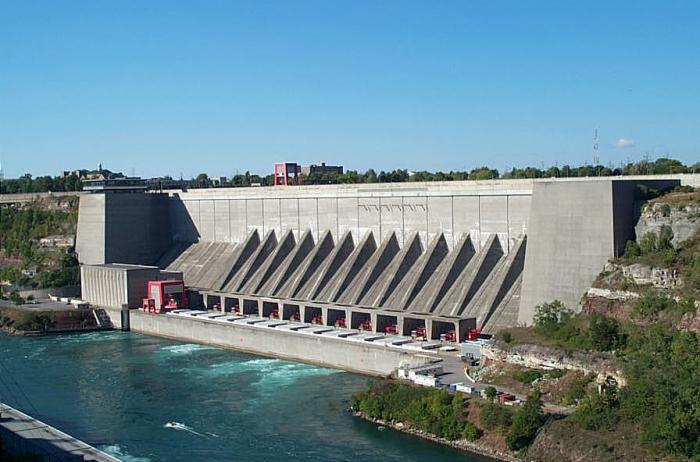

As the world's population grows steadily, we need more and more energy to support the population. The energy contained in the bowels of the earth can be very different. For example, there are renewable sources: wind, solar and water energy. They are environmentally friendly, and therefore you can use them without fear of causing harm to the environment.
Energy of water
This method has been used for many centuries. Today, a huge number of dams, reservoirs have been built, in which water is used to generate electricity. The essence of this mechanism is simple: under the influence of the flow of the river, the wheels of the turbines rotate, respectively, the energy of the water is converted into electrical energy.
Today there are a large number of hydroelectric power plants that convert the energy of the flow of water into electricity. The peculiarity of this method is that hydropower resources are renewed, respectively, such structures have a low cost. That is why, despite the fact that the construction of hydroelectric power plants has been going on for quite a long time, and the process itself is very costly, nevertheless, these structures significantly outperform power-intensive industries.
Energy of the sun: modern and future-proof
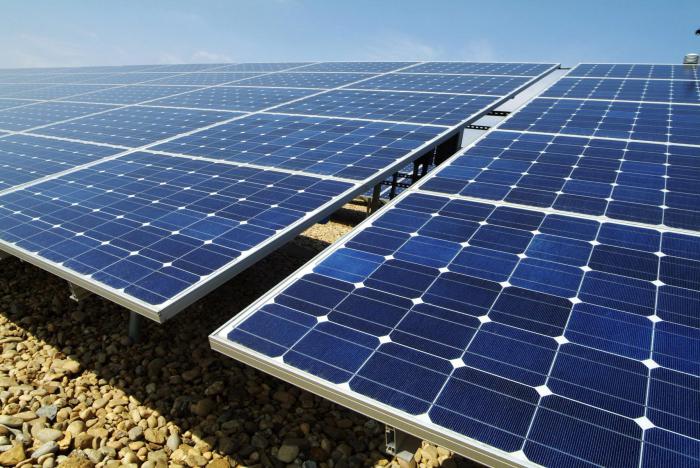

Solar energy is obtained using solar panels, but modern technology allows you to use new methods for this. The world's largest solar power plant is a system built in the California desert. It fully powers 2,000 houses. The design works as follows: the sun's rays are reflected from the mirrors, which are sent to the central boiler with water. It boils and turns into steam that drives the turbine. She, in turn, is connected to an electric generator. Wind can also be used as the energy that the Earth gives us. The wind blows the sails, turns the mills. And now it can be used to create devices that will generate electrical energy. By rotating the blades of the windmill, it drives the turbine shaft, which, in turn, is connected to an electric generator.
Applications
The exploitation of geothermal energy dates back to the 19th century. The first was the experience of Italians living in the province of Tuscany, who used warm water from sources for heating. With her help, new wells drilling rigs worked.
Tuscan water is rich in boron and, when evaporated, turned into boric acid, boilers operated on the heat of their own waters. At the beginning of the 20th century (1904), the Tuscans went further and launched a steam power plant. The example of the Italians became an important experience for the USA, Japan, Iceland.
Agriculture and horticulture
Geothermal energy is used in agriculture, healthcare and households in 80 countries around the world.
The first thing that thermal water has been and is used for is heating greenhouses and greenhouses, which makes it possible to harvest vegetables, fruits and flowers even in winter. Warm water also came in handy for watering.
Growing crops in hydroponics is considered a promising direction for agricultural producers.Some fish farms use heated water in artificial reservoirs for breeding fry and fish.
We advise you to read: Procedure for the disposal of laboratory chemical reagents
These technologies are common in Israel, Kenya, Greece, Mexico.
Industry and housing and communal services
More than a century ago, hot thermal steam was already the basis for generating electricity. Since then, it has served industry and utilities.
In Iceland, 80% of housing is heated by thermal water.
Three schemes of electricity production have been developed:
- Straight line using water vapor. The simplest: it is used where there is direct access to geothermal vapors.
- Indirect, does not use steam, but water. It is fed to the evaporator, converted into steam by a technical method and sent to the turbine generator.
Water requires additional purification, because it contains aggressive compounds that can destroy the working mechanisms. Waste, but not yet cooled down steam is suitable for heating needs.
- Mixed (binary). Water replaces fuel, which heats another fluid with higher heat transfer. It drives the turbine.
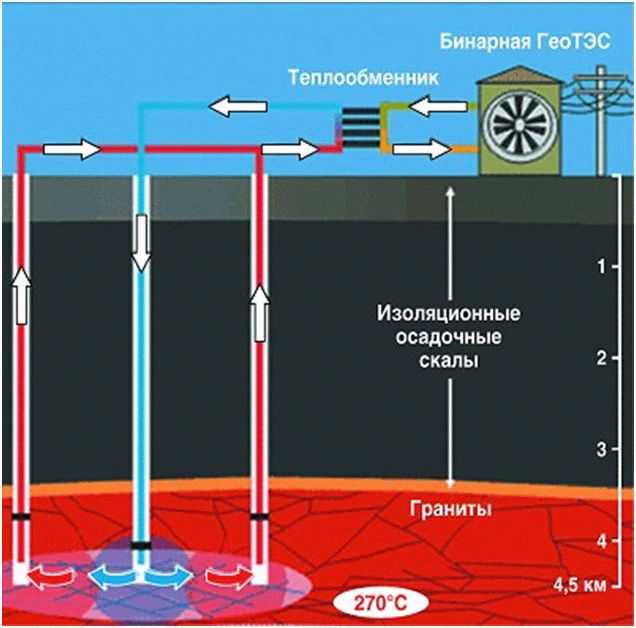

The binary system employs a turbine, which is activated by the energy of heated water.
Hydrothermal energy is used by the USA, Russia, Japan, New Zealand, Turkey and other countries.
Geothermal heating systems for home
A heat carrier heated to +50 - 600C is suitable for heating housing, geothermal energy meets this requirement. Cities with a population of several tens of thousands of people can be heated by the warmth of the earth's interior. As an example: heating of the city of Labinsk, Krasnodar Territory, runs on natural terrestrial fuel.


Diagram of a geothermal system for heating a house
There is no need to waste time and energy on heating water and building a boiler room. The coolant is taken directly from the geyser source. The same water is also suitable for hot water supply. In the first and second cases, it undergoes the necessary preliminary technical and chemical cleaning.
The resulting energy costs two to three times cheaper. Installations for private houses appeared. They are more expensive than traditional fuel boilers, but in the process of operation they justify the costs.
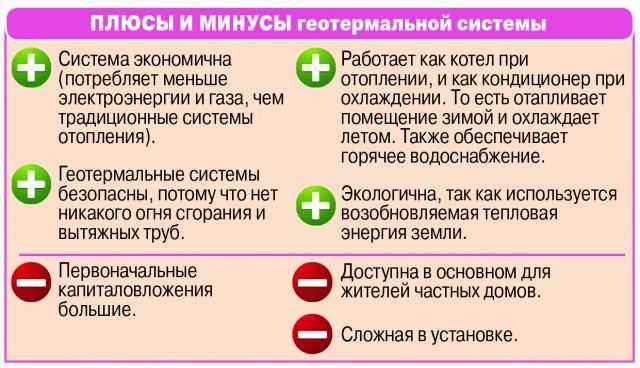

The advantages and disadvantages of using geothermal energy to heat a home.
Inner energy of the Earth
It appeared as a result of several processes, the main of which are accretion and radioactivity. According to scientists, the formation of the Earth and its mass took place over several million years, and this happened due to the formation of planetesimals. They stuck together, respectively, the mass of the Earth became more and more. After our planet began to have modern mass, but was still devoid of atmosphere, meteoric and asteroid bodies fell on it without hindrance. This process is called accretion, and it led to the release of significant gravitational energy. And the larger the bodies fell on the planet, the greater the amount of energy released, contained in the bowels of the Earth.
This gravitational differentiation led to the fact that substances began to stratify: heavy substances simply drowned, and light and volatile ones floated up. Differentiation also affected the additional release of gravitational energy.
Almost all the basic physical properties of the Earth's matter depend on temperature. Depending on the temperature, the pressure changes at which the substance passes from a solid to a molten state. When the temperature changes, the viscosity, electrical conductivity, and magnetic properties of the rocks that make up the Earth change. To imagine what is happening inside the Earth, we must definitely know its thermal state. We do not yet have the opportunity to directly measure temperatures at any depths of the Earth. Only the first few kilometers of the earth's crust are available to our measurements.But we can determine the internal temperature of the Earth indirectly, based on data on the Earth's heat flow.
The impossibility of direct verification is, of course, a very big difficulty in many earth sciences. Nevertheless, the successful development of observations and theories gradually brings our knowledge closer to the truth.
Modern science about the thermal state and history of the Earth - geothermics Is a young science. The first study on geothermics appeared only in the middle of the last century. William Thomson (Lord Kelvin), then still a very young scientist, physicist, devoted his dissertation to determining the age of the Earth based on the study of the distribution and movement of heat inside the planet. Kelvin believed that the internal temperature of the Earth should decrease over time due to the formation and solidification of the planet from molten matter.
By defining thermal gradient - the rate of increase in temperature with depth - in mines and wells at different depths, Kelvin came to the conclusion that from these data it is possible to assume how long the Earth should cool down, and, therefore, determine the age of the Earth. According to Kelvin's estimate, the temperature at the nearest depths below the surface increases by 20-40 ° C for every thousand meters of depth. It turned out that the Earth cooled down to its present state in just a few tens of millions of years. But this does not in any way agree with other data, for example, with data on the duration of many known geological epochs. The debate on this issue continued for half a century and put Kelvin in opposition to such prominent evolutionists as Charles Darwin and Thomas Huxley.
Kelvin based his conclusions on the idea that the Earth was originally in a molten state and was gradually cooling down. This hypothesis has dominated for decades. However, at the turn of the 20th century, discoveries were made that fundamentally changed the understanding of the nature of the deep heat flow of the Earth and its thermal history. Radioactivity was discovered, studies of the processes of heat release during the radioactive decay of some isotopes began, conclusions were drawn that the rocks that make up the earth's crust contain a significant amount of radioactive isotopes.
Direct measurements of the Earth's heat flow began relatively recently: first on the continents - in 1939 in deep wells in South Africa, at the bottom of the oceans later - since 1954, in the Atlantic. In our country, for the first time, the heat flow was measured in deep wells in Sochi and Matsesta. In recent years, the accumulation of experimentally obtained data on heat fluxes is proceeding rather quickly.
Why is this done? And are new and new dimensions still needed? Yes, very much needed. Comparison of measurements of the deep heat flux carried out at different points of the planet shows that the loss of energy through different parts of the planet's surface occurs in different ways. This indicates the heterogeneity of the crust and mantle, makes it possible to judge the nature of many processes occurring at various depths inaccessible to our eyes under the earth's surface, and provides a key to studying the mechanism of the planet's development and its internal energy.
How much heat does the Earth lose due to the heat flow from the bowels? It turns out that on average this value is small - about 0.06 watts per square meter of surface, or about 30 trillion watts over the entire planet. The Earth receives energy from the Sun about 4 thousand times more. And, of course, it is solar heat that plays a major role in establishing the temperature on the earth's surface.
The heat given off by a planet through a surface the size of a football field is approximately equal to the heat that three hundred-watt light bulbs can produce. Such a flow of energy seems insignificant, but after all, it emanates from the entire surface of the Earth and constantly! The power of the entire heat flow coming from the bowels of the planet is about 30 times greater than the power of all modern power plants in the world.
Depth measurement heat flow of the Earth the process is difficult and time consuming. Through the hard earth's crust, heat is conducted to the surface conductively, that is, through the propagation of thermal vibrations. Therefore, the amount of passing heat is equal to the product temperature gradient (the rate of increase in temperature with depth) on thermal conductivity. To determine the heat flux, it is imperative to know these two quantities. The temperature gradient is measured with sensitive devices - sensors (thermistors) in mines or specially drilled wells, at a depth of several tens to several hundred meters. The thermal conductivity of rocks is determined by examining samples in laboratories.
Measurement heat flows at the bottom of the oceans associated with considerable difficulties: work has to be done under water at significant depths. However, it also has its advantages: there is no need to drill wells at the bottom of the oceans, because the sediments are usually quite soft and the long cylindrical probe used to measure the temperature easily sinks several meters into soft sediments.
Those who are engaged in geothermics really need heat flow map for the entire surface of the planet. The points at which the heat flow measurements have already been carried out are extremely unevenly distributed over the Earth's surface. On the seas and oceans, measurements have been made twice as much as on land. North America, Europe and Australia, the oceans in the middle latitudes have been studied quite fully. And in other parts of the earth's surface, measurements are still few or not at all. Nevertheless, the current volume of data on the heat flow of the Earth already makes it possible to build generalized, but fairly reliable maps.
The release of heat from the bowels of the Earth to the surface is uneven. In some areas, the Earth gives off more heat than the global average, in others, the heat output is much less. "Cold spots" occur in Eastern Europe (East European Platform), Canada (Canadian Shield), North Africa, Australia, South America, deep-water basins of the Pacific, Indian and Atlantic oceans. "Warm" and "hot" spots - areas of increased heat flow - occur in the regions of California, Alpine Europe, Iceland, the Red Sea, the East Pacific Rise, and the underwater mid-range ridges of the Atlantic and Indian Oceans.
Atomic Energy
The use of the energy of the earth can happen in different ways. For example, with the construction of nuclear power plants, when thermal energy is released due to the disintegration of the smallest particles of matter of atoms. The main fuel is uranium, which is contained in the earth's crust. Many believe that this particular method of obtaining energy is the most promising, but its application is fraught with a number of problems. First, uranium emits radiation that kills all living organisms. In addition, if this substance enters the soil or atmosphere, then a real man-made disaster will arise. We are still experiencing the sad consequences of the accident at the Chernobyl nuclear power plant. The danger lies in the fact that radioactive waste can threaten all living things for a very, very long time, whole millennia.
First geothermal power plant
We are all accustomed to the fact that many years ago energy was extracted from natural resources. And so it was, but even before that, one of the first power plants was geothermal. In general, this is very logical, since the technique worked on steam traction, and using steam was the more correct decision. And actually the only one for that time, not counting the burning of wood and coal.
Back in 1817, Count François de Larderel developed a technology for collecting natural steam, which came in handy in the twentieth century, when the demand for geothermal power plants became very high.
The first actually working station was built in the Italian city of Larderello in 1904. True, it was more of a prototype, since it could only power 4 bulbs, but it worked. Six years later, in 1910, a really working station was built in the same city, which could produce energy sufficient for industrial use.


Even in such picturesque places there can be Geothermal power plants.
Experimental generators were built in many places, but it was Italy that held the lead until 1958 and was the only industrial producer of geothermal energy in the world.
Leadership had to be surrendered after the Wairakei power plant was commissioned in New Zealand. It was the first indirect geothermal power plant. A few years later, similar facilities opened in other countries, including the United States with its sources in California.
The first geothermal power plant of an indirect type was built in the USSR in 1967. At this time, this method of obtaining energy began to actively develop all over the world. Especially in places like Alaska, the Philippines and Indonesia, which are still among the leaders in the energy produced in this way.
New time - new ideas
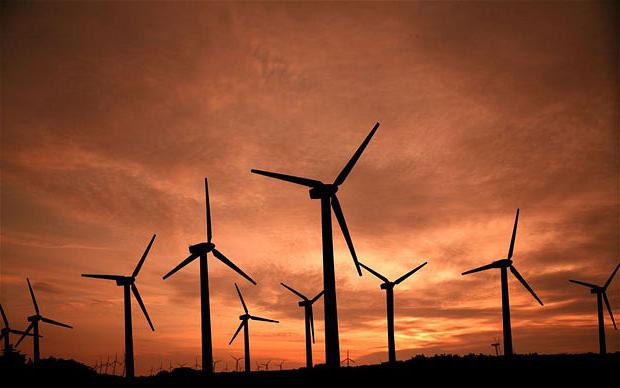

Of course, people do not stop there, and every year more and more attempts are made to find new ways to obtain energy. If the energy of the heat of the earth is obtained quite simply, then some methods are not so simple. For example, as a source of energy, it is quite possible to use biological gas, which is obtained from rotting waste. It can be used to heat houses and heat water.
Increasingly, tidal power plants are being built, when dams and turbines are installed across the mouths of reservoirs, which are driven by ebb and flow, respectively, electricity is obtained.
Burning trash, we get energy
Another method, which is already being used in Japan, is the creation of incinerators. Today they are built in England, Italy, Denmark, Germany, France, the Netherlands and the United States, but only in Japan these enterprises began to be used not only for their intended purpose, but also for generating electricity. Local factories burn 2/3 of all waste, while the factories are equipped with steam turbines. Accordingly, they supply heat and electricity to the surrounding areas. At the same time, in terms of costs, it is much more profitable to build such an enterprise than to build a CHP.
The prospect of using the Earth's heat where volcanoes are concentrated looks more tempting. In this case, it is not necessary to drill the Earth too deeply, since already at a depth of 300-500 meters the temperature will be at least twice the boiling point of water.
There is also such a method of generating electricity as hydrogen energy. Hydrogen - the simplest and lightest chemical element - can be considered an ideal fuel, because it is found where there is water. If you burn hydrogen, you can get water, which decomposes into oxygen and hydrogen. The hydrogen flame itself is harmless, that is, there will be no harm to the environment. The peculiarity of this element is that it has a high calorific value.
What's in the future?
Of course, the energy of the Earth's magnetic field or that which is obtained at nuclear power plants cannot fully satisfy all the needs of mankind, which are growing every year. However, experts say that there are no reasons for worries, since the planet's fuel resources are still enough. Moreover, more and more new sources, environmentally friendly and renewable, are being used.
The problem of environmental pollution remains, and it is growing catastrophically. The amount of harmful emissions goes off scale, respectively, the air we breathe is harmful, the water has dangerous impurities, and the soil is gradually depleted. That is why it is so important to timely engage in the study of such a phenomenon as energy in the bowels of the Earth, in order to look for ways to reduce the demand for fossil fuel and more actively use unconventional energy sources.
Limited resources of fossil energy raw materials
The demand for organic energy raw materials is great in industrially developed and developing countries (USA, Japan, the states of the united Europe, China, India, etc.). At the same time, their own hydrocarbon resources in these countries are either insufficient or reserved, and a country, for example, the United States, buys energy raw materials abroad or develops deposits in other countries.
In Russia, one of the richest countries in terms of energy resources, the economic needs for energy are still satisfied by the possibilities of using natural resources. However, the extraction of fossil hydrocarbons from the subsoil is proceeding at a very fast pace. If in the 1940-1960s. The main oil-producing regions were "Second Baku" in the Volga and Ural regions, then, starting from the 1970s, and up to the present time, such an area is Western Siberia. But here, too, there is a significant decrease in the production of fossil hydrocarbons. The era of "dry" Cenomanian gas is passing away. The previous stage of extensive development of natural gas production has come to an end. Its extraction from such giant deposits as Medvezhye, Urengoyskoye and Yamburgskoye amounted to 84, 65 and 50%, respectively. The share of oil reserves favorable for development also decreases over time.
Due to the active consumption of hydrocarbon fuels, onshore oil and natural gas reserves have significantly decreased. Now their main reserves are concentrated on the continental shelf. And although the resource base of the oil and gas industry is still sufficient for the production of oil and gas in Russia in the required volumes, in the near future it will be provided to an ever greater extent through the development of fields with difficult mining and geological conditions. The cost of producing hydrocarbon raw materials will continue to grow.
Most of the non-renewable resources extracted from the subsoil are used as fuel for power plants. First of all, it is natural gas, the share of which in the fuel structure is 64%.
In Russia, 70% of electricity is generated at thermal power plants. Energy enterprises of the country burn about 500 million tons of fuel equivalent annually. t. in order to generate electricity and heat, while for heat production, hydrocarbon fuel is consumed 3-4 times more than for electricity generation.
The amount of heat obtained from the combustion of these volumes of hydrocarbon raw materials is equivalent to the use of hundreds of tons of nuclear fuel - the difference is enormous. However, nuclear power requires environmental safety (to exclude the recurrence of Chernobyl) and its protection from possible terrorist attacks, as well as the implementation of safe and costly decommissioning of outdated and outdated NPP power units. The proven recoverable reserves of uranium in the world are about 3 million 400 thousand tons. For the entire previous period (until 2007), about 2 million tons were mined.
